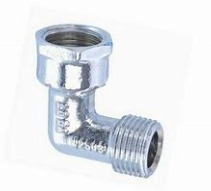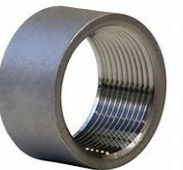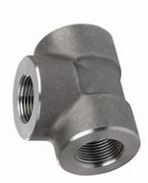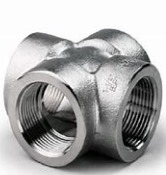Screwed fittings are unsung heroes. They power industries worldwide. They work in intricate machinery. In this exploration, we unravel the essence of these fittings. We examine their types, advantages, and common challenges. We also explore the art of ensuring leak-free connections.
What are Screwed Fittings?
Screwed fittings are components. They are designed to connect and secure pipes or tubing in a system. Their threaded design allows for a robust and reliable connection. This makes them fundamental in various industrial applications.
Types of Screwed Fittings
Elbows and Couplings:
Elbow Screwed Fitting Half Coupling Screwed Fitting
Elbows facilitate directional changes. Couplings are connectors that join two pipes together seamlessly.
Tees and Crosses:
Tee Screwed Fitting Cross Screwed Fitting
Tees enable the branching of pipelines. Crosses provide connections at four points, forming a crucial node in complex systems.
Advantages of Screwed Fittings
Screwed fittings offer many advantages. They are versatile and easy to install. They are essential in many industries. They can work with various materials and sizes. This provides a cost-effective and efficient solution for fluid systems.
Common Challenges in Screwed Fittings
A. Leak Issues and Causes
Thread Imperfections:
Imperfections in threads can compromise the connection’s integrity. This can lead to potential leaks. Understanding the nuances of thread quality is pivotal in addressing this challenge.
Incorrect Installation Practices:
The art of installing screwed fittings demands precision. Improper alignment and insufficient tightening are common mistakes. They can result in leakage issues later on.
B. Wear and Tear Over Time
Factors Contributing to Deterioration:
Environmental factors, corrosion, and material wear contribute to the natural aging of screwed fittings. Identifying these factors early on is crucial for preventative measures.
Impact on System Performance:
Deterioration can compromise the overall performance of a system. It affects efficiency and can lead to costly repairs. Regular monitoring is key to mitigating these impacts.
Also read ⬇️⬇️⬇️
Ensuring Leak-Free Connections
A. Proper Thread Sealant Application
Choosing the Right Sealant:
The selection of an appropriate sealant is critical for preventing leaks. The type of material and the operating conditions play a significant role in determining the ideal sealant.
Techniques for Effective Application:
Applying the sealant with precision ensures a uniform and durable seal. Understanding the proper techniques enhances the efficacy of the threaded connection.
B. Tightening Procedures for Long-Term Integrity
Torque Specifications:
Adhering to specified torque values is essential for achieving the optimal tightness. It prevents damage. Striking the right balance is an art that ensures long-term integrity.
Avoiding Over-tightening Pitfalls:
Over-tightening can be as detrimental as under-tightening. Striking the right balance safeguards against distortion, breakage, and potential leaks.
Best Practices for Screwed Fittings
A. Regular Inspection and Maintenance
Identifying Early Signs of Wear:
Routine inspections unveil early signs of wear and potential issues. Addressing these signs promptly prevents escalation and ensures system reliability.
Frequency of Check-ups:
Establishing a regular maintenance schedule is paramount. The frequency of check-ups depends on factors. Factors include system usage, environmental conditions, and the materials used.
B. Temperature and Pressure Considerations
Adapting to Extreme Conditions:
Screwed fittings must withstand diverse temperature and pressure conditions. Understanding the system’s operating environment is crucial. It helps in selecting fittings that can adapt and endure.
Guidelines for Optimal Performance:
Screwed fittings perform best when you follow industry standards for temperature and pressure.
Conclusion
Screwed fittings, though often overlooked, play a vital role in diverse industries. Their versatility, ease of installation, and affordability make them go-to heroes for connecting and securing pipes. Understanding their types, strengths, and potential challenges equips us to create leak-free, long-lasting systems.
The exploration highlights two key areas for a secure future: meticulous installation and proactive maintenance. Selecting the right sealant, applying it flawlessly, and adhering to proper torque specifications are crucial for leak-free connections. Regular inspections, along with awareness of factors like temperature and pressure, ensure fittings function optimally for years to come.
By embracing these practices, we can elevate screwed fittings from workhorses to champions, crafting a future where they silently ensure the smooth flow of our vital fluids. Remember, perfection in screwing lies not just in the product, but in our approach to its installation and care.
Post time: Feb-07-2024





